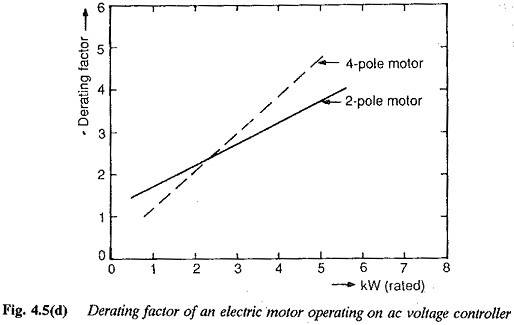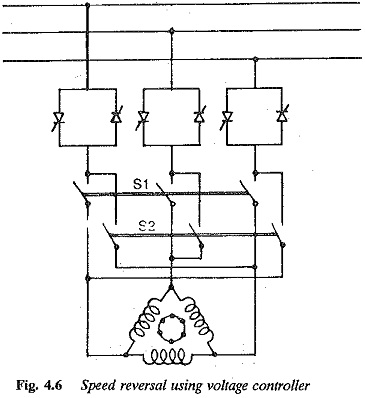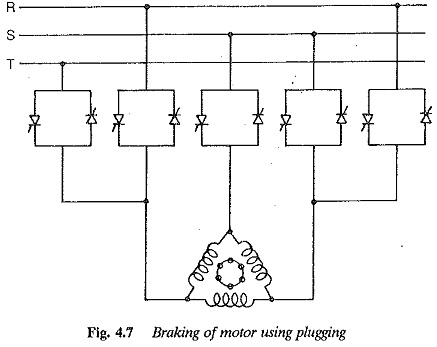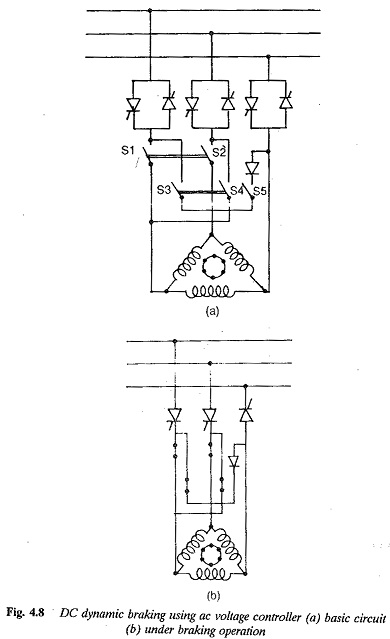Derating Factor of an Electric Motor Operating on AC Voltage Controller:
Typical derating factor of an induction motor fed from a voltage controller are shown in Fig. 4.5(d) when the motor drives a fan or pump loads (T α N2). The derating factor depends on the rated speed also.
Change of phase sequence changes the direction of the rotating magnetic field. The direction of rotation of the motor can be reversed by interchanging the connections to the two phases of the motor. Mechanical switches which are operated when the current is zero, may be employed. The method of speed reversal is shown in Fig. 4.6.
The drive is amenable for braking using the method of plugging. This is also called reverse current braking. The controller in this case must be designed to withstand the resulting currents which are greater than the starting current. If the current is limited, enough braking torque may not be present (Fig. 4.7).
Regenerative braking is possible. In this case braking till zero speed is not possible. The method of dc dynamic braking is illustrated in Fig. 4.8. In this method the motor is switched off from the ac voltage controller and switched on to dc. A stationary mmf is produced, which induces currents in the rotor to provide the braking torque.




